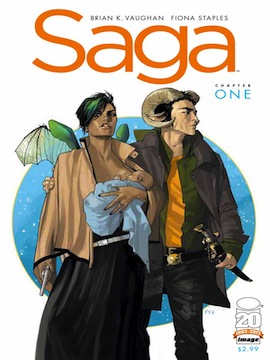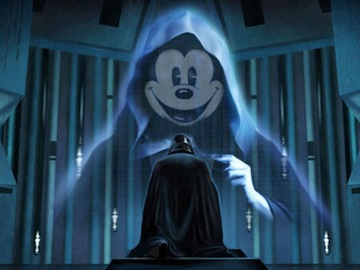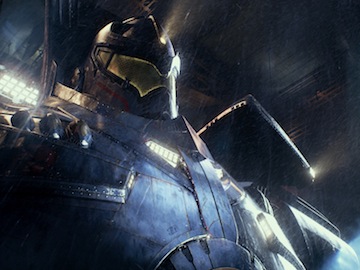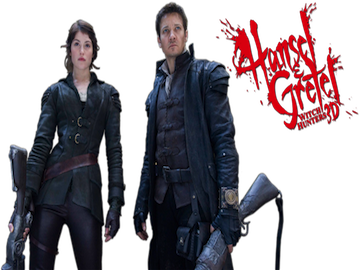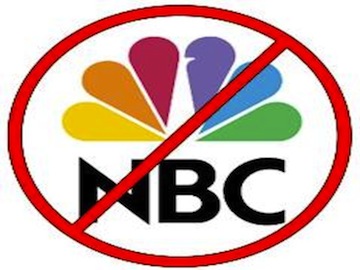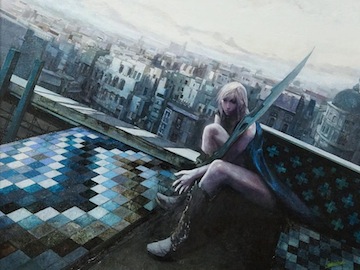THOUGH I TEND to look at New Year celebrations with no small amount of disdain—it’s actually a piss-poor evolutionary marker (how can you really measure the past before it’s settled?)—2012, if you comb deep enough, was pretty spectacular. Especially if, during that year and every year since you can remember, you were following the progression of speculative cultural advents with the same gusto political junkies take to C-Span. In the midst of a time of great upheaval for America, a venomous election, crazed gunmen, super-storms, and generalized hell across the globe, we culled the cream of our country’s creativity. In visual media, The Walking Dead stole over 10 million of our hearts (as well as our gizzards, kidneys, large intestines, etc). The Dark Knight Rises finished off Nolan’s stark, pre-Fascist Miller version of the caped crusader with considerable skill. On the less blockbuster-y side of the tracks, Brian K. Vaughan returned to comics with a bang, and that genre in general (Mat Johnson’s Right State comes to mind, along both Underwater Welder and Animal Man from Jeff Lamire and Scott Snyder’s re-envisioning of pretty much everything) enjoyed a boost in respectability despite frequent stumbling blocks.
Yes, it seems as if the last 12 months on that stretch of earth called America have been beneficial to nerd-kind. We’ve made courageous steps towards futurism and encouraged a culture of innovation that succeeds again and again in spite of nefarious, retrograde forces. Science is beginning to eclipse science fiction, and from the brackish water found on Mars, to government funding for light speed and the Higgs Boson particle, a pillar of society is now outpacing Mayan apocalypses and skirting a worldview that involves humanity surviving (even if whilst rafting over flood waters). This year has been a shot to the balls to Luddites, ultraconservatives, and extreme leftists alike, all of who have a hard time accepting that neither the Messiah nor globalization will obliterate our humanity.
And so HEAR ME, NERDS! I, ‘Nerd’stradamus, the basement-born, Cutter of Interwebs, Knower of Geek-kin, do hereby focus my inner eye upon 2013, predicting what it is thou should seek, and why—but also warning thee of cultural pollution, offering sage advice before thou read, view, or buy.
1) Saga, by Brian K. Vaughan.
Easily my favorite comic of 2012, Saga is basically a story of interracial (or inter-planetary) love that is soaked in politics, blood, and humanism (despite the paucity of actual humans). It is as brilliantly paced, neoteric, and, despite its brevity thus far, moving as anything I’ve taken off the lit fic shelf this year. Brian K. Vaughan is one of those writers who can operate well within any given framework, showing that a story is enhanced by its telling, and not necessarily by its subject matter. In 2013 I expect it to really take off, and become comics’ classic.
Why should thou seek?
Comics have only begun to gain respectability in recent years. Despite incredible new exposure, as seen here, they still face general disapproval amongst literary and artistic stalwarts (check out culture-fascist Mark Bauerlein on CNN, or Arthur Krystal’s ‘so what?’ quibble over ‘felt life’ in the New Yorker, for recent examples). Writers like Michael Chabon, Mat Johnson, Victor LaValle, and Jonathan Lethem, to mention just a few, have only begun to drive attention towards those colorful spreads of script, where marginalized fantasists have been stowed away out of art’s institutional light for years. Writers like Brian K. Vaughan, however, have been principle champions of upmarket comic literature, showcasing the genre at the top of its potential by acting as a sort of mad scientist. The attention he’ll get for doing this will be marginalized, of course, but that shouldn’t stop you from taking a look. Comics are only going to get better form here on out. And if you’re not jumping on the wagon, you’re missing out on the future of actual earthbound technology. All the gadgets you use and net-grids you surf evolved from people who discovered creative vision from Jack Kirby, not Jack Kerouac. Not to say that we shouldn’t love naturalistic art, but comics such as Saga imagine a world in which spirituality, science, and sexuality are explored through an intricate political lens, and there’s nothing quite like it.
Notable mentionings:
Digital comics will surely be taking off to unprecedented heights in 2013, especially after the recent success of as JL8, The Oatmeal, and The Abominable Charles Christopher. Also, if you like your weeklies, be sure to pick up Scott Snyder’s debut Superman (being that he’s rocked Batman to the core), and Brian Azerello’s Wonder Woman. Rumor has it that Robert Kirkman has something new on the horizon as well…so stay tuned!
2) Disney’s acquisition of Lucasfilm
Back in October, Disney announced it had officially bought Lucasfilm for nothing short of $4.05 billion. This was a move that galvanized the vast ‘Old Star Wars’ fan base back to life, especially after the polarizing prequels, which were viewed by many (including yours truly) as the moment George Lucas sold their childhood down the river. But now that Disney has stepped in, the chatterboxes are vibrating on high frequency. Some, seeing Disney as generally child-oriented and rife with capitalist kitsch, are rightfully frightened about where they’ll take the franchise, while others, looking to Pixar and Studio Ghibli, are more or less elated by the news. I fall into the J.J. Abrams’ camp, as this is what he had to say in response to the news: “Part of me? Thrilled. Part of me? Terrified. Most of me? Thrillified.” The newest film is slated for release in 2015, but 2013 will the year of big reveals, including casting, concept, and direction, allowing fans to predict whether we’ll be counting on a worthwhile re-imagining or the aesthetic equivalent of the Amazing Spiderman.
Why should thou seek?
Good question. The only reason reboots like this are important is because they act as a litmus test for market cynicism. In this case, it’s a matter of fans versus film-makers, and whether or not there’s any communication between the two. In Lucas’s prequels, we saw an utter disdain for devotees, with sights instead set on snagging a new generation. Thus, even if it wasn’t all about the money, it was certainly all about George Lucas (and oh, the sins he has committed since!). The reason why the recent Star Trek reboot was such a success is because, despite its big budget theatrics, it appealed to what fans loved the most about the franchise. Character is everything, and this year will be good for seeing whether or not Disney can defy Michael Bay’s soulless Transformer’s formula and raise the corpse Lucas buried back from the dead.
3) Natsuo Kirino, The Goddess Chronicle
It’s always difficult for me to write about actual novels I’m anticipating in any given year. Firstly, as an author of a book that itself is due out for release this April, and guy who reads everything from Song of Ice and Fire, NW, and Hitch 22 to the letters to the editors in the back of my favorite comic books, there are just too many incredible stories being written to keep track of. But since we’re talking genre here, I’d like to mention Natsuo Kirino’s upcoming book, The Goddess Chronicle.
Why should thou seek?
Natsuo Kirino is a lot of things. To mention a few: she’s Japanese, female, prolific, and merciless. All of which are significant, being that it’s great to see a culture that seems not to be as hung up on genre tropes make its way into the American society. Her books, while detective fiction, deal with predetermined mental illness, feminist prostitution, murder, death, and gender warfare. Through her eyes we’re shown that character, ideology, and art are no more reserved for the Paris Review then they are for hardboiled noir. Her new book, The Goddess Chronicle, which will be released on August 6th, is about a girl named Kamikuu who, ‘on a mystical island in the shape of tear drop…is chosen as the next Oracle, while Namima (her sister) is forced to become the goddess of darkness.
Honestly, that’s all I need to know.
4) Video games…at the MoMa?
That’s right, in 2013, New York’s world famous MoMa, arbiter of cutting edge, big-concept, un-populist art, is showcasing 14 fucking video games in the museum’s Philip Johnson Galleries. Though it plans to add 26 more, the initial list consists of Pac-Man, Tetris, Another World, Myst, SimCity 2000, Vib-Ribbon, The Sims, Katamari Damacy, Eve Online, Dwarf Fortress, Portal, flOw, Passage and Canabalt. Here’s a missive from the official announcement page: ‘Over the past year and a half we have sought the advice of scholars, digital conservation and legal experts, historians, and critics, all of whom helped us refine not only the criteria and the wish list, but also the issues of acquisition, display, and conservation of digital artifacts that are made even more complex by the games’ interactive nature. This acquisition allows the Museum to study, preserve, and exhibit video games as part of its Architecture and Design collection.’
Why should thou seek?
Popular attitudes towards video games are much like those felt towards comic books at the time of their incipience, or, if you go further back, film, television, and books. Yet, as a casual gamer myself who has interest in the process in which video games are created, how they interact with players, and how their design affects perspective, I am elated to see this medium being treated with the seriousness it deserves. As I discussed in an article I wrote for Kotaku, video games can be art, and it’s worth regarding them with curiosity, especially since the rapidly modernizing world is becoming an interactive wonderland. Some fear that video games don’t have a pulse on reality. I happen to think that they are echoing the reality to come. See this exhibit if you can.
5) Star Trek Into Darkness, Pacific Rim, Iron Man 3, Man of Steel, and Ender’s Game.
Why should thou seek?
Without getting too deep into descriptions of each individual film, I believe that 2013 will be a good year for abandoning post-apocalyptic tropes in favor of more resilient (and thus less lazy) narratives. 2012 America was subsumed in Mayan doom, with the end of days perpetually around the corner, submersing the earth in fire and brimstone. But instead of careening into a void of cosmic destruction after the prophecy itself died, we found ourselves alive, wide-eyed, and dealing with problems that—unless you’re Mike Huckabee—are far less mystical in nature. From Sandy Hook and Aurora to Hurricane Sandy and Syria, we saw humanity in constant struggle to survive, many times due to its own lack of foresight. 2013 will be, so I believe, a year for ideas, or at least attempting to solve problems that are endemic to our existence. Whether that battle is represented in fighting Japanese Garuda monsters or facing down evil phantoms from the past, I believe these films are looking towards a bright light at the end of the tunnel, a reclamation of earth, as opposed to a masochistic want for its destruction.
Special mention: I’m going on a limb here to say that Man of Steel is going to be the first successful reimagining of the Superman franchise in since 1978. And the reason for this? Michael Shannon is playing Zod. Much in the way Game of Thrones star Peter Dinklage just is Tyrion Lannister, Boardwalk Empire’s square-jawed, 6’3” antihero Shannon is Zod. This is more than mere coincidence we’re talking about, here. This is destiny.
AND NOW I, ‘Nerd’stradamus, offer hazmat gear against the poison clouds, what it is thou geek-kin should not seek, and why, to ensure your time, and protect your skinny wallet.
1) Hansel and Gretal, Witch Hunters, Jack the Giant Slayer, and any other cheap fairy tale revival that has no place in society.
Over the last couple of years, we’ve seen an increase in fairytale revivals, from Red Riding Hood to Snow White and the Huntsman. Inspired by Peter Jackson’s success with LOTR, but without any clear inspiration or idiosyncrasy, these films digress into odd cliché hero narratives that involve bilateral moral forces, warrantless end battles, and bland, lackluster CGI
Why should I seeketh not?
Not only are these films generally terrible in terms of scripting and concept, they are massive wastes of money. If you’re at all interested in genre as art, and take your speculative narratives seriously, then you should actively boycott these cynical affronts to all that is good in the world. If you want to recreate a fairy tale, then draw from Bill Willingham’s Fables, not NBC’s Grimm. Either that or create your own! Guillermo Del Toro did it with Pan’s Labyrinth. Can’t any of you come up with a better way to spend $125 million? I’m looking at you, Rupert Sanders…
Other notable un-mentionables: The Wolverine, 300: Rise of an Empire, and The Hobbit: The Desolation of Smog. The last of these I place here with a heavy heart. Peter Jackson’s first release in the needless three-part installment of The Hobbit isn’t too terrible if seen in 24 frames per second, but I cannot fathom, for the fucking life of me, why the bearded fantasist encouraged his fans to watch it in 48. The experiment failed, Jackson. It looked absolutely abysmal, like I was watching some sad, Middle Earth reenactment play on a local television station. I might end up seeing the second installation in the series anyway, but I’ll never forget what you did to me. Never.
2) Pretty much everything on NBC.
Why should I seeketh not?
Save for a couple perky comedy gems like Parks and Recreation and Community, NBC’s 2013 line-up makes me inclined to write my very first piece of hate mail. Fox isn’t any stranger to terrible television, but at least it aired shows like Fringe and Terranova (bye bye, Terranova, we’ll miss you—especially since we got short changed by Revolution). But what is NBC’s answer to this? Grimm? Are you fucking kidding me? You watch Grimm for twenty minutes and tell me it’s not one of the saddest, stupidest, worst acted series to ever hit television. Now, in 2013, NBC is bringing us yet more turds to nosh on. Do No Harm, in particular, looks like a bad admixture of Dexter and Awake, the latter of which is only interesting in concept, not execution. Yet another recreation mish-mash that is intended to take a modern spin on the tale of Dr. Jekyll and Mr. Hyde, shows like this make me think that attempting to be original is not nearly as important in a corporate atmosphere as selling something with a tested formula. It’s a smack in the face to viewers the nation-over, and, yet again, a shameful waste of resources.
3) Lightning Returns: Final Fantasy XIII
In yet another addition to the Final Fantasy series, this high-octane game with eye-bleeding graphics will most definitely lead to a groan-inducing letdown.
Why should I seeketh not?
Now, let me begin by saying that I know this is a video game, and, as I mentioned earlier, already lined up for dismissal by the vast majority as anything worth discussing with seriousness. But this particular game, one of many in a long line of Final Fantasy titles dating from 1986, is something everyone should care about. The Final Fantasy series was integral to my development as a child, and taught an entire Nintendo generation how to look at design, adventure, choice making, and puzzle solving in an entirely different light. These games used to be groundbreaking. The art was monolithic in its grace and execution, and the interface itself offered the appearance of an open world. You could talk, discover, and alter the vim of your quest. But the last few installations in the series (FFXIII and FFXIII-2 come immediately to mind) have subverted that great tradition with stagey melodrama and inescapable linearity. The fact that they’re releasing yet another paltry addition to the franchise is just insult to injury, and, if you like games, I’d suggest you stay away.
4) 3D movies
Why should I seeketh not?
Look, I don’t want to be the guy who cries sensationalism, but what the hell is the deal with clunky, eye-shattering, migraine inducing 3D, and why the hell are we being treated like it’s the next big thing? 3D movies have been around for a long time. I saw Thriller 3D at Epcot Center when I was nine. It wasn’t that cool then, and it’s certainly not cool now. If anything, 3D can act as a chintzy stand in for good writing and direction, replacing story arc and emotion with ‘Whoa lookee that.’ There have been a few exceptions, but as someone who is not against explosions, I believe that 3D should have to take a time out for being so uninventive, so goddamned worthless, until the industry comes up with something better.
And finally, o’ keepers of virginity, I offer my insight to changeless things, things which, to my immense regret, will change but not at all:
–The Winds of Winter won’t get released.
-We still won’t know what the fuck happened on Lost.
-The world’s not going to end. Which is somewhat unfortunate, because if it did, I would be able to dig my doomsday survival pack out of the pressure lock below my kitchen floor and fight those zombie space alien underwater Cthulu gods to the goddamned death!

